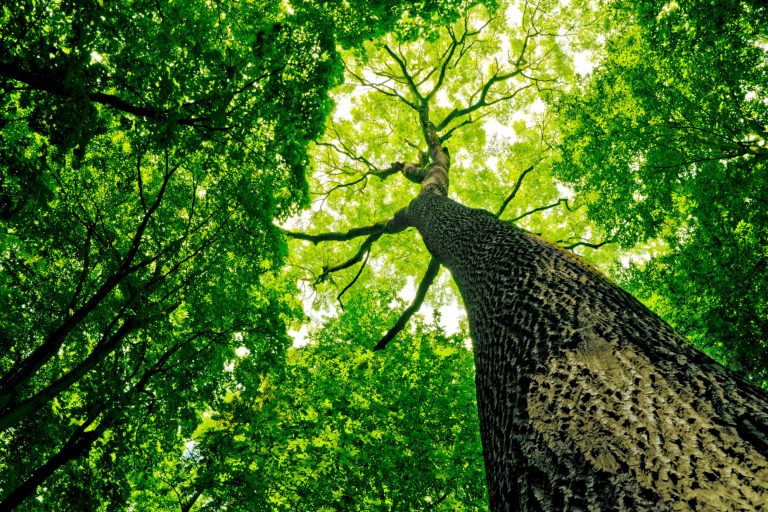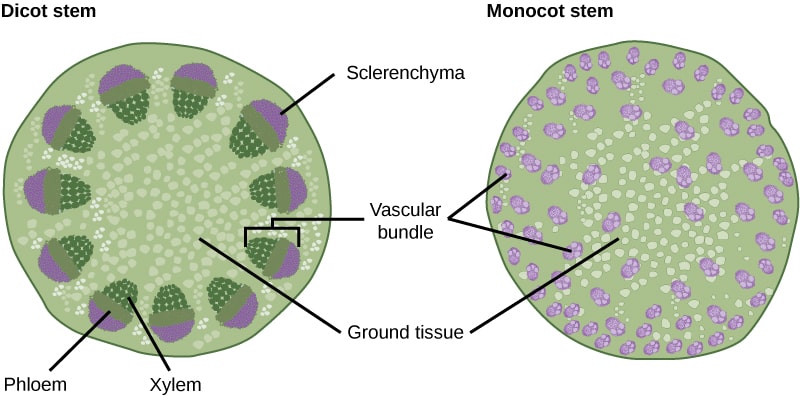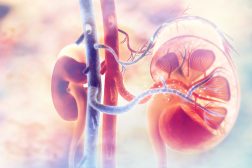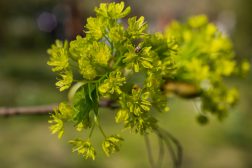Stems

Stem provides structural support to plants.
Table of Contents
External Form of a Woody Twig
A woody twig, or stem, is an axis with leaves attached. The leaves are arranged in various ways around and on the axis. You may hear them described as an alternate, or alternately arranged, opposite or oppositely arranged, or if they are found in groups of three or more they may be referred to as whorled. The region, just a general area in this case, where the leaves attach to the stem are called nodes. The region of stem between two nodes is called the internode. The leaf blade is attached to the stem via a stalk called the petiole. In the angle, or axil, formed between the petiole and the stem you will find the axillary bud. Axillary refers to a structure that forms an armpit, just for trivia’s sake. These buds can become new branches or they may have tissues that will form into flowers for the next season. Most buds are protected by bud scales which fall off as bud tissue begins to grow. In general, at the tip of a twig a terminal (or ending) bud is present. It is larger than the axillary buds and produces tissues to extend twig length during the growing season. When the bud scales of a terminal bud fall off they leave scars on the twig. You can calculate the age of a twig by counting up the terminal bud scale scars. There are other scars on twigs that may look like terminal bud scars that are left by paired appendages called stipules which are found at the base of a petiole in the axil.
Trees and shrubs that lose their leaves every year, deciduous plants, have characteristic leaf scars with dormant, or not active, axillary buds directly above them. Sometimes tiny bundle scars can be seen. These scars are found in the leaf scar and mark the location of food and water-conducting tissues. The shape and arrangement of the bundle scars can help distinguish deciduous trees in the winter months when the leaf structures are absent.
The Origin and Development of Stems
Recall that the apical meristem is responsible for vertical growth, or increase in the length of a stem. Prior to the start of the growing season, the cells in the apical meristem are dormant. The apical meristem is protected at the tip of the twig, by the covering bud scales and by the leaf primordial. The leaf primordia are tiny embryonic leaves that will develop into mature leaves after bud scales drop off and growth commences. When a seed germinates or a bud begins to grow, the cells in the apical meristem undergo mitosis. From these cells three primary meristems will develop:
- The outermost meristem is the protoderm, which gives rise to the epidermis. This layer is usually one cell thick and becomes coated with a waxy cuticle.
- The second layer is the procambium, which is a cylinder of strands. This layer gives rise to the primary xylem and primary phloem cells.
- The innermost meristem is the ground meristem from which arises two tissues composed of parenchyma cells. The tissue in the center of the stem is the pith. These cells are large and may break down shortly after being formed which leaves a cylindrical hollow area. If they do not break down, they will be compressed by new additions to the plant girth by other meristems. The second parenchyma tissue that arises is called the cortex. Cortex may be quite extensive and also crushed or replaced in woody stems. The function of both tissues is food storage. If chloroplasts are present the tissues may function in producing food.
It is important to note that all five of the above-mentioned tissues—epidermis, primary xylem, primary phloem, pith, and cortex—are produced by the apical meristem and are, thus, primary tissues as the plant is increasing in length. Xylem and phloem tissue branch off from the main vascular cylinder and enter into the leaf or bud. Each branching of vascular tissue is called a trace. Each trace branch leaves a small thumbnail shaped gap in the cylinder of tissue and are called leaf gaps and bud gaps.
In between the primary xylem and primary phloem, a thin band of cells retains its meristematic nature. This band becomes the vascular cambium of one of the two lateral meristems.
In woody plants and some others, a second cambium arises from the cortex or sometimes the epidermis or phloem. The second cambium is called the cork cambium or phellogen and is responsible for producing cork cells. Recall that the cork cells become filled with suberin which waterproofs the cells. The resulting cork tissue constitutes the out bark of woody plants and functions to reduce water loss and to protect the stem against mechanical injury. We will revisit the role of cork later on in discussing biotechnology and propagation. For now, though, understand that cork tissue cuts off food and water supplies to the epidermis which results in sloughing off. Also, understand that cork tissues do not form a solid cylinder around the exterior of a woody stem. This is to allow vital gas exchange with the environment.
Before we go on, it is important to remember the difference between monocots and dicots, the two main divisions of flowering plants. Most of the distinguishing revolves around the seed leaves, which are called cotyledons. Cotyledons function in storing food needed by the young seedling until true leaves grow and are able to take over the food supplying function.
- Monocotyledon (monocot) plants—These plants form from seeds that have one embryonic seed leaf (hence the ‘mono’ in monocot).
- Dicotyledon (dicot) plants—These plants form from seeds that have two (hence the ‘di’ in dicot) embryonic seed leaf.
Cone-bearing trees, conifers, such as pines, have multiple cotyledons, usually eight, in their seed structure.
Plant Stem Tissue Patterns
In the study of plants, understanding the different tissue patterns is essential.

Steles
Steles are a central cylinder in most younger stems and roots, composed of primary xylem, phloem, and the pith, if present. Sometimes referred to as eusteles, which are vascular bundles in higher vascular plants.
Herbaceous dicotyledonous stems
Herbaceous refers to non-woody plants. Plants that die after going from seed to maturity are called annuals. In general, most monocots are annuals, but there are annual dicot plants as well. Annual dicots are mostly composed of primary tissues, although there may be some minimal secondary growth. Remember, the plant only lives a year, so extensive secondary growth, or increases in width, really doesn’t make sense as far as using the plant resources. A cross-section of a herbaceous dicot stem will show discrete patches of xylem and phloem, vascular bundles, that are arranged in a proper ring separating the cortex and the pith. If secondary xylem and phloem are to emerge, they will arise from between the two primary tissues. Monocots will be discussed shortly.
Woody stems
Wood is essentially secondary xylem growth. These stems look similar to herbaceous dicot stems up until the vascular cambium and the cork cambium start functioning. The differences are then quite obvious. While some tropical trees demonstrate year-round secondary growth, most trees in temperate climates grow in the spring and summer and cease through the winter. In the springtime, when water and resources are plentiful, the vascular cambium produces large xylem cells. During the summer months when resources and water may be lacking or reduced, the xylem cells are small. Pressed up against the large, light-colored xylem cells, the small xylem cells look like a thin dark ring. One year of xylem growth, called an annual ring, can be measured as the distance between the dark rings—or the distance between summer xylem growth. Summer growth is called summerwood while the large spring cells are called springwood. Much can be learned about the local environmental conditions through the years by looking at tree rings. If water is plentiful the rings will be wider than usual. Years with fires and blights will be evident, as well as insect infestations and fungal infections. All this by looking at a cross-section of a tree. In conifers, vessels and fibers are absent and thus the wood consists mainly of tracheids. It is important therefore to remember that environmental conditions affect xylem production and the dark rings may not be completely visible, one year’s growth is what constitutes an annual ring, not just dark circles.
The vascular cambium produces more xylem than phloem. In fact, the phloem will be difficult to locate as the cells are thinner than xylem and more likely to collapse under the pressure of the cambiums. Phloem grows to the outside of the vascular cambium and xylem grows to the inside. The oldest xylem is in the very center of the stem/trunk. The wood in the center is called heartwood. It is usually darker as the vessels and tracheids are filled with old resins, gums, and tannins. The younger wood where the xylem is still functioning is toward the outside of the stem nearest the cambium and is lighter in color. This younger wood is called sapwood. The main role of heartwood is structure and support since it is unable to conduct water and nutrients. The heartwood sometimes rots out of an otherwise living tree. Sapwood develops at roughly the same rate that heartwood is ‘retiring’ and thus vital conducting functions are not compromised. Recall that conifers (a group of gymnosperms) do not have vessels or fibers and are primarily tracheids. Conifers have resin canals scattered throughout the xylem tissue. Conifers are primarily considered to be softwoods while the wood of woody dicot trees is considered to be hardwood.
Bark is all of the tissues outside of the cambium, including the phloem. Some have gone so far as to distinguish between inner bark—primary and secondary phloem and outer bark—the periderm, which consists of cork tissue and cork cambium. The cells in these layers only function briefly as they usually become crushed and then slough off. New layers are annually produced by the cambiums. The youngest phloem cells are the ones nearest the vascular cambium and are most active in transporting nutrients, sugars, and water. Mature bark may be composed of alternating layers of crushed phloem and cork.
Monocotyledonous stems
These plants are usually grass or grass-like and do not grow to great size. Monocot stems do not have vascular cambiums or cork cambiums, as growth will not be lateral. The vascular bundles produced by the procambium are scattered throughout the stem, rather than organized in rings as in woody dicot stems. Every bundle is oriented with the xylem toward the center of the stem and the phloem toward the stem surface. The xylem in the vascular bundle generally consists of two large vessels with some small vessels in between them, while the phloem consists of sieve tubes and companion cells. The entire vascular bundle is wrapped in a sheath of sclerenchyma cells. The background tissue between vascular bundles is not divided into cortex and pith in monocots, but they do have similar function and appearance as the parenchyma cells in cortex and pith. The concentration of bundles and bands of sclerenchyma cells, give the stem the flexibility and strength to withstand the elements—such as a summer rainstorm. In grasses, there is an intercalary meristem at the base o each internode which contributes to growth in length, like apical meristems. During the growing season, the stems of the grasses elongate rapidly. Because there is no vascular cambium that would produce tissues to increase the girth of the plant, the growth is columnar with very little variation in diameter between the top and the bottom of the plant.
Palm trees are special because they grow to a considerable size, however, this is primarily due to the subsequent division and growth of their parenchyma cells. All this growth occurs without a true cambium developing. Other monocot stems have adaptations that allow for specialized growth. Monocot fibers, such as manila hemp and sisal, come from stems and leaves and are used for commercial products however, their fibers are not as strong as dicot fibers.
Modified Stems
Rhizomes
Rhizomes are horizontal stems that grow beneath the ground, but near the surface of the soil. They resemble roots but are actually modified stems with scale-like leaves and buds at each axillary node. In addition, adventitious roots are produced along the rhizome on the lower surface in order to increase the absorption surface area.
Runners and stolons
Runners are horizontal stems that grow above ground, usually along the surface (compare with rhizomes). Strawberry plants produce runners after the first flowering of the season, they may extend out up to 3 feet or more beyond the parent plant. Along the runner, adventitious buds will develop in order to propagate new plants. Stolons are similar to runners, except that they grow roughly vertically beneath the surface of the soil. Irish potato plants have tubers at the tips of stolons.
Tubers
Tubers develop at the tips of stolons. The plant accumulates food at the stolon and the area swells at the internodes. When the tuber is mature the stolon will die and the ‘eyes’ of the potato are actually nodes arranged in a spiral around the modified stem. Each eye has an axillary bud in the axil of a tiny leaf, which is not always visible in maturing tubers.
Bulbs
Bulbs are actually large buds with a small stem at the lower end that is surrounded with fleshy leaves. Onions, irises, and tulips are good examples of bulbs and their main function is food storage.
Corms
At first glance you might think these guys are bulbs, however, the differences lie beneath the thin layer of leaves covering the outside of the corm. Adventitious roots form beneath the fullness of the base. Corms function in storing food. Crocuses and gladioli are good examples of plants with corms.
Cladophylls
Cladophylls are usually called the prickly part of a cactus. They are flattened and somewhat leaf-like in appearance. The center of each cladophyll usually has a node with small scalelike leaves complete with axillary buds. The scaly look to asparagus is cladophylls. These specialized stems are not only restricted to cacti but are found in some orchids and green briars.
Other Specialized Stems
Cacti usually have modifications in their stem or ‘trunk’ structure in order to hold extra water. Other stems may be modified into thorns or briars. It is important to remember that not all thorn-like structures are stems! Raspberry and rose prickles are extensions of their epidermis and are neither thorns nor spines. Other stems are modified for climbing, such as tendrils and ramblers.
Importance
Stems are vital to the human cause. They provide building materials, paper products, food and much, much more! Stop and think of how many things you encounter in a day that is either made of wood or plant fiber or a derivative product, chances are good they are a stem derivative.
You will also like...

Stems
Stems primarily provide plants structural support. This tutorial includes lectures on the external form of a woody twig ..

The Conscious & Unconscious Nervous System
This tutorial elaborates on how the nervous system works, particularly at the tissue level of the brain. There are three..

Fruits, Flowers, and Seeds
This tutorial deals with the structure and function of flowers, fruits, and seeds. Also included here are the types of f..

Protein Activity and Cellular Metabolism
Proteins have a crucial role in various biological activities. Get to know how proteins are able to perform as enzymes, ..

Homeostasis of Organism Water Regulation
Osmoregulation is the regulation of water concentrations in the bloodstream, effectively controlling the amount of water..

Gibberellins and Gibberellic Acid
This tutorial describes the role of gibberellin family in plants. Find out the effects of gibberellin on plant growth an..
